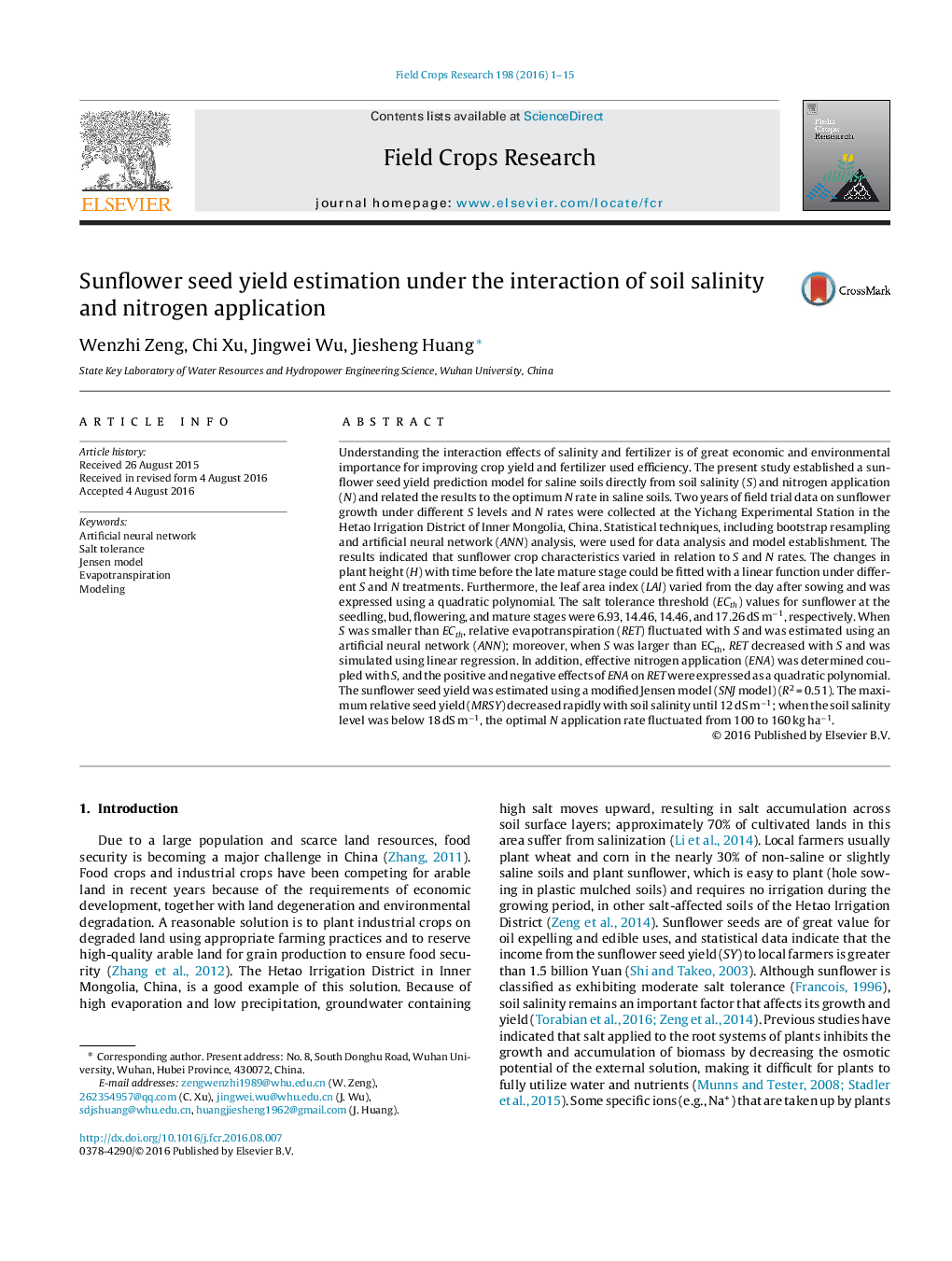| Article ID | Journal | Published Year | Pages | File Type |
|---|---|---|---|---|
| 6374380 | Field Crops Research | 2016 | 15 Pages |
Abstract
Understanding the interaction effects of salinity and fertilizer is of great economic and environmental importance for improving crop yield and fertilizer used efficiency. The present study established a sunflower seed yield prediction model for saline soils directly from soil salinity (S) and nitrogen application (N) and related the results to the optimum N rate in saline soils. Two years of field trial data on sunflower growth under different S levels and N rates were collected at the Yichang Experimental Station in the Hetao Irrigation District of Inner Mongolia, China. Statistical techniques, including bootstrap resampling and artificial neural network (ANN) analysis, were used for data analysis and model establishment. The results indicated that sunflower crop characteristics varied in relation to S and N rates. The changes in plant height (H) with time before the late mature stage could be fitted with a linear function under different S and N treatments. Furthermore, the leaf area index (LAI) varied from the day after sowing and was expressed using a quadratic polynomial. The salt tolerance threshold (ECth) values for sunflower at the seedling, bud, flowering, and mature stages were 6.93, 14.46, 14.46, and 17.26 dS mâ1, respectively. When S was smaller than ECth, relative evapotranspiration (RET) fluctuated with S and was estimated using an artificial neural network (ANN); moreover, when S was larger than ECth, RET decreased with S and was simulated using linear regression. In addition, effective nitrogen application (ENA) was determined coupled with S, and the positive and negative effects of ENA on RET were expressed as a quadratic polynomial. The sunflower seed yield was estimated using a modified Jensen model (SNJ model) (R2 = 0.51). The maximum relative seed yield (MRSY) decreased rapidly with soil salinity until 12 dS mâ1; when the soil salinity level was below 18 dS mâ1, the optimal N application rate fluctuated from 100 to 160 kg haâ1.
Related Topics
Life Sciences
Agricultural and Biological Sciences
Agronomy and Crop Science
Authors
Wenzhi Zeng, Chi Xu, Jingwei Wu, Jiesheng Huang,
